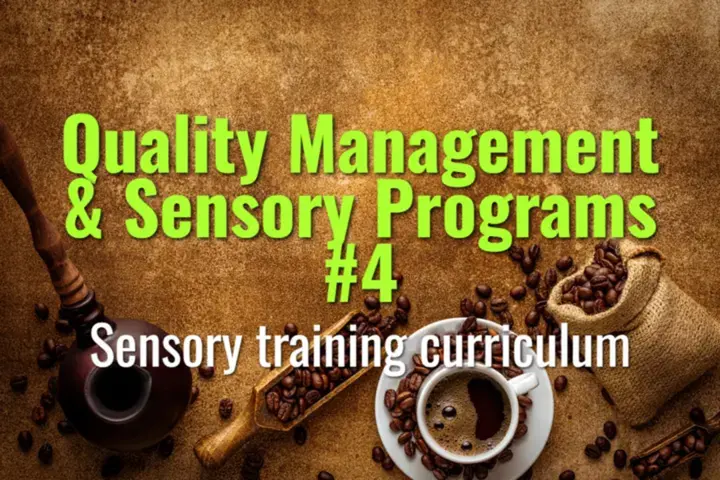Sensory training curriculum
How to design a sensory training curriculum for coffee tasters, from beginner to advanced, covering theory, practice, and calibration.
- Coffee Basics Nerds
- 2 min read
Article 4 of 12 in Quality Management & Sensory Programs/

Why Sensory Training?
- Coffee evaluation depends on human perception.
- Training builds accuracy, consistency, and confidence in sensory judgments.
- A structured curriculum ensures tasters progress from basic recognition to professional calibration.
Curriculum Stages
- Foundation (Beginner):
- Learn SCA cupping protocol step-by-step.
- Introduction to the Flavor Wheel & lexicon.
- Basic taste identification: sweet, sour, bitter, salty, umami.
- Aroma recognition with reference kits (e.g., Le Nez du Café).
- Intermediate:
- Identify coffee-specific defects (phenolic, moldy, earthy, baked, scorched).
- Blind cupping exercises across origins and processes.
- Triangulation tests for consistency.
- Intro to body, aftertaste, and balance scoring.
- Advanced:
- Calibration against industry panels (Q-graders, head roasters).
- Training with controlled roast and process variables.
- Sensory memory building: cataloging reference points for acidity (citric, malic, phosphoric).
- Advanced statistical cupping: variance reduction, inter-rater reliability.
- Expert/Professional:
- Leading calibration sessions.
- Designing defect libraries.
- Conducting consumer sensory research.
- Teaching and mentoring junior tasters.
Training Methods
- Daily Calibration Cuppings: Short sessions to align palate.
- Sensory Kits: Commercial kits for aroma/taste reinforcement.
- Cross-Modal Exercises: Practice linking flavors with textures, temperatures, or memories.
- Blind Testing: Removes bias, sharpens objectivity.
Practical Scheduling
- Short, frequent sessions (15–30 min daily) more effective than rare, long ones.
- Rotate between cupping, aroma kit work, and blind tests.
- Document progress with tasting logs and score comparisons.
Summary
A structured sensory training curriculum builds tasters from foundational taste recognition to advanced professional calibration. Combining cupping, defect recognition, aroma kits, and calibration sessions ensures consistent, accurate sensory evaluation across the coffee supply chain.